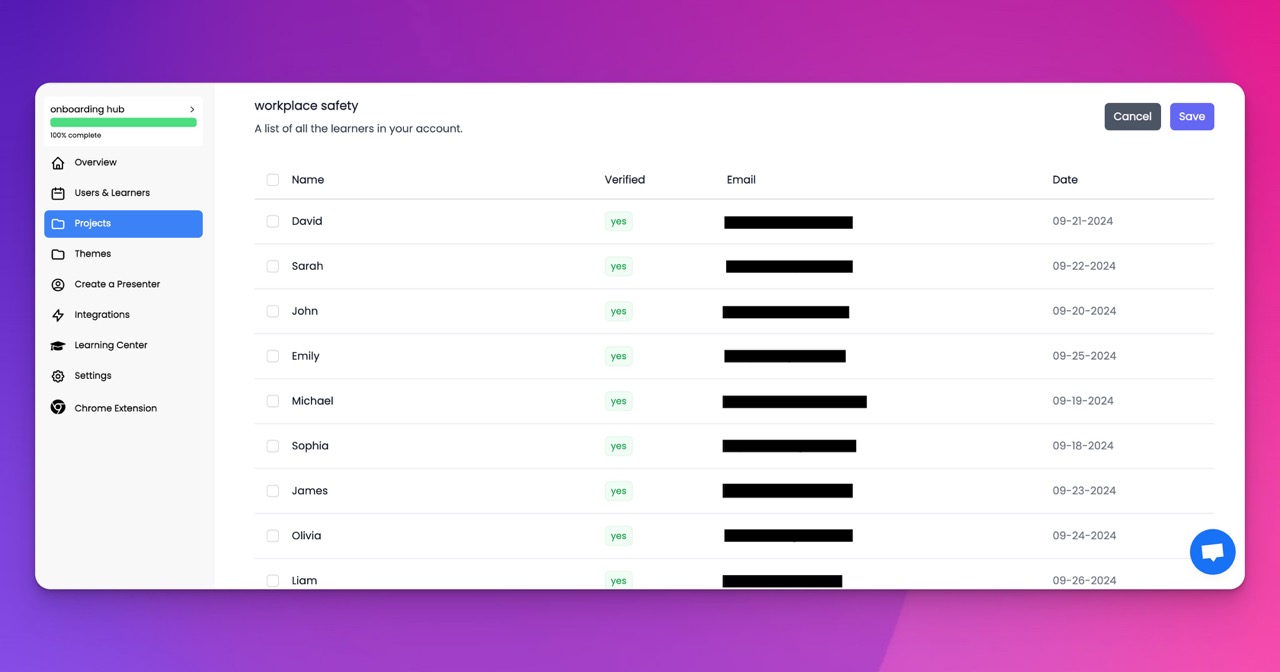🎉 Trainday now integrates with Zendesk and Hubspot 🎉 Trainday now integrates with Zendesk and Hubspot 🎉 Trainday now integrates with Zendesk and Hubspot
🎉 Trainday now integrates with Zendesk and Hubspot
🎉 Trainday now integrates with Zendesk and Hubspot
Contact
"The Power Of AI Avatars In Employee Training: Unlocking Benefits And Enhancing Skills"
The Power of AI Avatars in Employee Training: Unlocking Benefits and Enhancing Skills
In today's rapidly evolving technological landscape, organizations are constantly seeking innovative ways to enhance employee training and development programs. One such breakthrough technology that holds immense promise is the utilization of AI avatars. These virtual entities, powered by artificial intelligence, have the potential to revolutionize the way employees learn and grow within their respective roles. In this blog post, we will explore the various benefits of AI avatars in employee training and how they can significantly enhance skills acquisition.
First and foremost, AI avatars offer a personalized and immersive learning experience. Traditional training methods often lack individual tailoring, as employees are expected to follow a standardized curriculum. However, AI avatars can adapt to the needs and preferences of each employee, creating a customized learning journey. By analyzing an employee's performance, the avatar can identify areas of improvement and design specific training modules to address these gaps. This personalized approach not only increases engagement but also ensures that employees acquire the necessary skills at their own pace, leading to improved retention and application.
Furthermore, AI avatars provide employees with the opportunity to practice real life scenarios in a risk free environment. For instance, in customer service training, an avatar can simulate challenging customer interactions, allowing employees to fine tune their communication and problem solving skills. This type of experiential learning is invaluable, as it helps employees develop confidence and competence without the fear of making mistakes that could impact real customers. By repeatedly practicing in immersive simulations, employees can refine their skills and build muscle memory, leading to improved performance in real world scenarios.
Another significant benefit of AI avatars is their ability to provide immediate feedback and performance evaluation. Unlike traditional training methods, where feedback may be delayed or limited, AI avatars can assess an employee's actions in real time and provide constructive feedback. This instantaneous feedback loop enables employees to identify areas for improvement immediately, fostering a continuous learning mindset. Moreover, AI avatars can track an employee's progress over time, generating comprehensive performance reports. These reports can serve as a valuable tool for managers and HR departments, allowing them to identify skill gaps and design targeted training interventions.
Additionally, AI avatars can facilitate collaborative learning experiences. By leveraging advanced natural language processing capabilities, avatars can engage in interactive conversations with employees, simulating real life interactions. This enables employees to practice their communication and teamwork skills in a dynamic and engaging manner. Moreover, AI avatars can facilitate virtual group discussions, where employees can share knowledge, brainstorm ideas, and learn from each other's experiences. By fostering collaboration, AI avatars create a supportive learning environment that promotes knowledge sharing and skill development.
Lastly, AI avatars offer the potential for continuous learning and upskilling. As technology and industry trends evolve, employees need to stay updated with the latest knowledge and skills. AI avatars can serve as virtual mentors, providing employees with on demand access to relevant resources and training materials. This empowers employees to take control of their professional development and actively seek opportunities for growth. With AI avatars, employees can engage in ongoing learning, ensuring their skills remain up to date and aligned with organizational goals.
In conclusion, the power of AI avatars in employee training is undeniable. From personalized learning experiences and risk free simulations to immediate feedback and continuous learning opportunities, AI avatars have the potential to unlock numerous benefits and enhance employee skills. As organizations strive to stay competitive in an ever changing world, embracing this transformative technology can be a game changer in developing a skilled and engaged workforce.
Accelerate Compliance.
Deliver OSHA-Ready Courses Instantly.
Empower your team with data-driven training solutions tailored to your industry's safety standards. Stay compliant, reduce risks, and boost productivity with AI-powered course creation.
